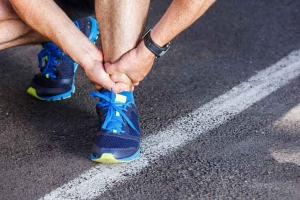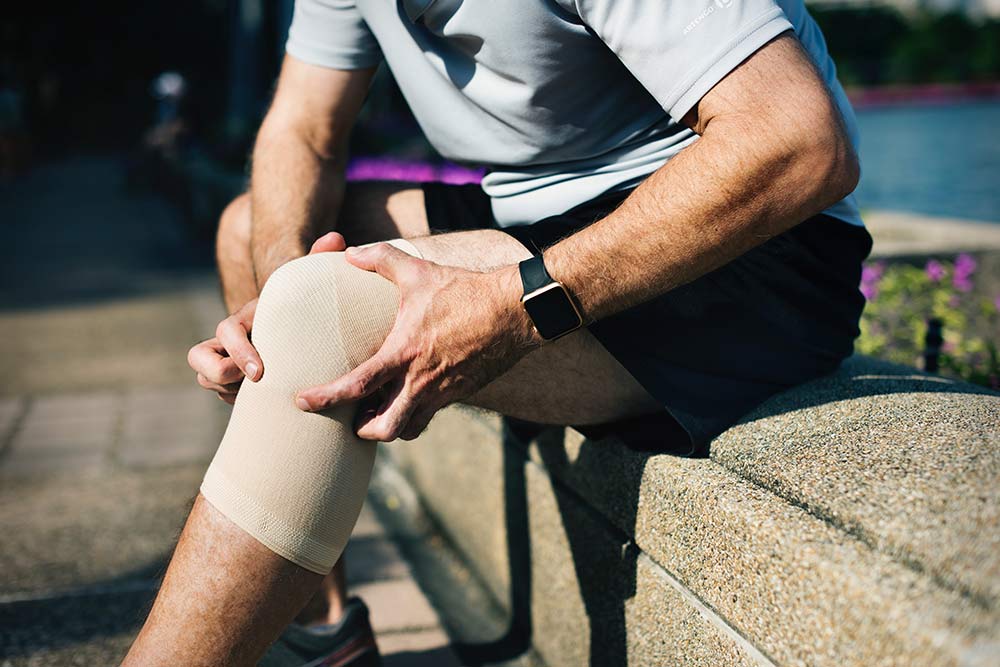Ankle Sprains Start In The Hip

Ryan Cross – B.A. Hons (Kin), MScPT, FCAMPT Registered Physiotherapist at CBI Physiotherapy and Rehabilitation Centre in Sarnia, Ontario, Canada
Over the past few weeks I have written about the importance of the hip joint in prevention and recovery of injuries.
In two articles I highlighted how the hip can influence the back and the knee, as well as common exercises to improve mobility and strength in the area. An article recently published in the American Journal of Sports Medicine discusses yet another example of how hip strength affects injuries in the lower extremity (De Ridder, 2016).
Related Article: 5 Hip Exercises For Prevention And Performance
Ankle Sprains
 An ankle sprain is the most common injury in soccer, but is also a very common injury both in day to day activities and many other sports. It seems as though I always have at least one patient on my case load who has suffered an ankle sprain.
An ankle sprain is the most common injury in soccer, but is also a very common injury both in day to day activities and many other sports. It seems as though I always have at least one patient on my case load who has suffered an ankle sprain.
The authors of this study set out to determine intrinsic physical and modifiable risk factors for ankle sprains in a youth soccer population (age 10-16 years). The study design was a case-control, three season, prospective study. This means that these athletes were measured and tested prior to the study period before any injury had taken place.
Measurements Included:
-
Demographics
-
Anthropometric data
-
Hip strength
*using a hand held dynamometer (flexion, extension, abduction, adduction, internal and external rotation).
This allowed the authors to account for the influence of factors other than hip strength to determine risk of ankle sprain. Over the course of the 3 year study period, data was collected on injuries (type of injury, body part, etc).
Data On Injuries
The results showed that hip extension strength was an independent risk factor associated with lateral ankle sprains. After statistical analysis, higher hip strength lowered the risk of sustaining the injury in the first place and lengthened the time being injury free for those who did suffer an ankle sprain.
The authors went on to discuss the rationale behind hip weakness as a risk factor for injury.
Soccer is a high intense and high impact sport that requires action at high speeds. It also involves frequent changes in speed and direction of running, jumping and landing. Hip extensor strength is important in decelerating your body during the landing phase of a jump and weakness in this area may alter the control of the landing or put increased force in other areas of the body (ie ankle ligaments).
Takeaway
This research study is very helpful clinically when developing injury prevention programs and in the recovery after the injury. Although this study focused on youth soccer players, I believe it can be applicable to active people of all ages. The mechanics of running, jumping, and landing requires proper motion at the pelvis, hip, knee, and ankle so any strength deficit could predispose injury.
I usually work with patients after they have sustained the injury and as we progress through recovery a heavy focus is placed on preventing recurring injuries or future problems down the road. It is always important to consider the entire kinetic chain for injury prevention and management, but it is nice to have this evidence back up your practice.
Related Article: It’s All In The Hips
De Ridder, Roel, et al. “Hip Strength as an Intrinsic Risk Factor for Lateral Ankle Sprains in Youth Soccer Players A 3-Season Prospective Study.” The American Journal of Sports Medicine (2016): 0363546516672650.
You Might Like:















